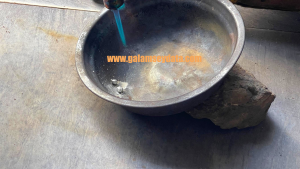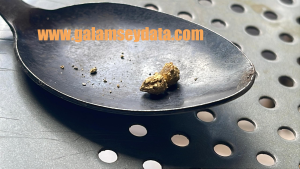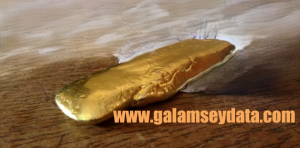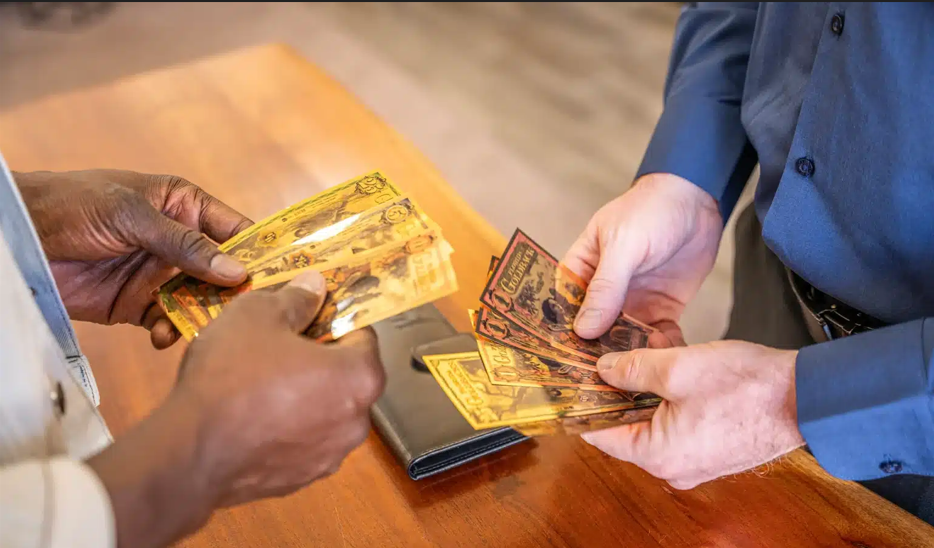In Ghana’s illegal small-scale mining sector, known locally as galamsey, the story of gold does not end when it is dug out of the earth. What follows is a shadowy but well-organized chain of transactions linking rural pits to international markets. This informal system runs largely on trust, cash, and networks of middlemen that connect the miner in Tarkwa or Dunkwa directly to investors sitting in Dubai, India, or Canada.
It is worthy of note that, even legalized small scale gold buying and selling have same or similar approach. The only difference is whether the actors involved does it leally or illegally. With that said, below is a simplified look at how galamsey gold is traded, from the investor’s first move to the final export.
- The Investor: The Source of Capital
It often begins with a foreign investor who wants to acquire gold, sometimes for resale, sometimes for refinery or export. These investors are usually individuals or small syndicates from places like India, Dubai, China, or Canada.
Because galamsey operates outside formal banking and export systems, investors rely on trusted contacts in Ghana. These are often business people or influencers with a reputation for “getting things done.” Once trust is established, the investor transfers cash; usually hand-to-hand, to this Ghanaian contact. Let’s call this person Corroborator A.
- Corroborator A: The Local Middleman
Corroborator A acts as the first local link in the chain. From the funds received, A takes a cut (his “service fee”) and then passes the rest to another trusted associate in a mining region, Corroborator B, who will handle the ground-level purchasing.
Corroborator B, now acting as the Agent, is typically based in a gold-producing area such as Tarkwa, Prestea, Obuasi, Asuadie, Abodom, Essienkyiem, and Watreso, Offin Dunkwa, Akwatia, Ayinam, or Wassa Akropong, where galamsey is common. The Agent’s role is to distribute money to multiple local gold buyers.
- The Agent and Local Buyers: Fueling the Galamsey Engine
With the cash in hand, the Agent moves through local towns, giving out portions to small-scale gold buyers who operate shops in galamsey zones. These buyers in turn act as financiers for miners.
Each buyer advances money to miners they trust to go and mine gold. The deal is simple: the miner must return with gold worth at least as much as the money received, ideally with a margin of profit for both sides.
- The Miner: Gold in “Med Form” At the mining site, the galamseyer previously used crude tools; shovels, dredges, or excavators to extract gold. After washing, the “black” gold appears in a water mixture, where mercury is poured onto it to pull all the gold in the black form together, to become what is known locally as “med form.”

Gold in med form with heat being applied
- The galamseyer now sends the med form gold to the buyer, who is either at the very community level, or in a district capital. To determine its true value, the buyer heats the med form over fire, evaporating the mercury and leaving small yellow globules of pure gold called “balls” or “boss.” These are weighed on a small scale, using local units like “blades.”
- Example: One blade of gold corresponds to a known weight, and its value is calculated using the current international gold price.
- The miner’s share is the difference between the gold’s value and the money he initially borrowed. If the yield falls short, it’s considered a loss—but the cycle continues with another attempt.

Mercury evaporates to reveal gold after heating
- The Buyer’s Role: Converting Gold to Cash
Once the miner delivers the gold, the buyer melts all the “balls” from different miners together into a small metal bar or lump. This helps standardize the form for resale.

Several gold balls melted together to become a “gold bar”.
The buyer then hands this gold over to the Agent (Corroborator B), who originally provided the money. The Agent weighs the gold, matches its value with the amount of cash advanced, and records the difference as either profit or loss.
- From Agent to Investor: Completing the Loop
The Agent, after collecting gold from several buyers, also melts all the pieces into one or more bars. These are then sent to Corroborator A in Accra or another city.
Corroborator A repeats the same accounting—deducting his own commission—and finally transfers the accumulated gold to the foreign investor who started the cycle. The investor may then:
- Sell it locally through a licensed trader to disguise its origin, or
- Export it directly through informal or illegal channels, bypassing Ghana’s official gold export systems.
In both cases, the gold enters the international market, indistinguishable from legally mined gold.
- The Cycle That Sustains Galamsey
This chain of trust, cash, and gold repeats itself endlessly. When miners succeed, more cash flows into the field. When they fail, investors adjust their bets and fund other areas. The informal nature of this trade means no taxes, no royalties, and no records.
